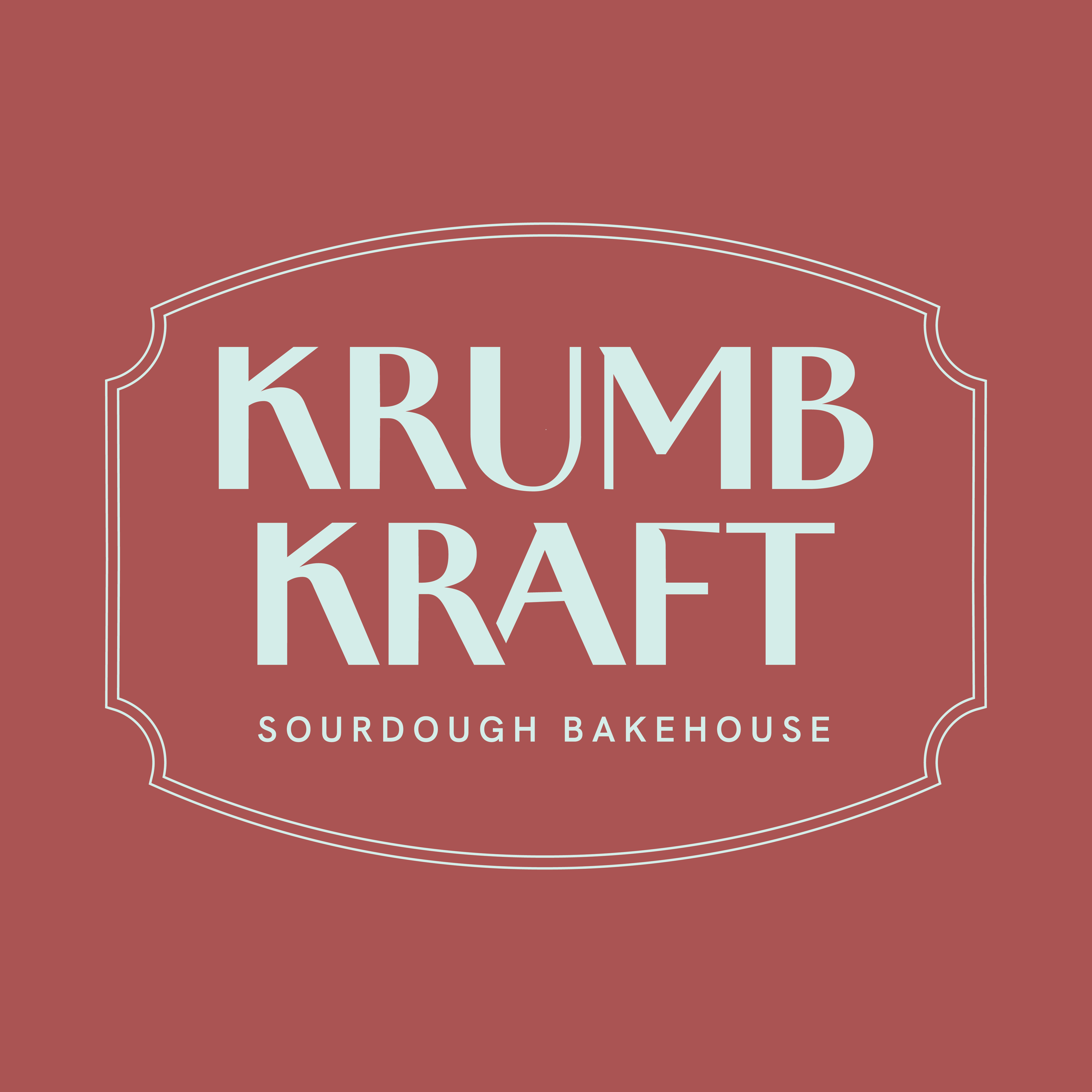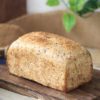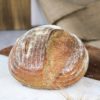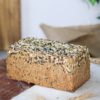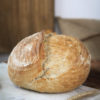In all the workshops I’ve taken, my students have a lot of questions about sourdough and the magic it creates. Here’s a set of Frequently Asked Questions I have put together to help you out. I promise you, by the end of this post, all your basic questions will be answered and you will understand Sourdough better.
What is Sourdough bread?
Sourdough bread is a result of the most basic and traditional form of breadmaking and has been known to and used by mankind for many centuries (probably around 3500 BCE according to Wikipedia!)
Basically, it is bread made using flour, a culture (naturally occurring wild yeast and bacteria), water and salt (optional). So it goes without saying that there are no external chemicals or additives used in the making of Sourdough bread
Sourdough, a feast for all your senses.
Sight
It looks beautiful, way more appealing than the boxy shape and standard brown colour of commercial bread. Sourdough can be made in various sizes, shapes, colors, textures, and patterns.
Taste & Smell
The variations achievable in depth of flavour, aromas, and tastes in Sourdough are infinite and unique to each. So every bake is a pleasant surprise and a baker’s masterpiece.
Feel
Only Sourdough bread achieves a deep auburn, hard crusty exterior and soft, spongy, moist interior. The level of crunch and hardness is also easily controllable to suit what you like. Bite into it and you experience what it’s like.
Easy to bake
You can make your own Sourdough bread at home – there is no tiresome kneading of dough. It’s all a gentle, slow and pleasurable process. So therapeutic!
Long preserving
The fermentation creates acids which inhibit the growth of mold. So there’s no need to add any chemicals as a preserve and the bread stays fresh longer. Also, the crispy crust works as a shell within which the bread stays fresh for a longer time.
Is sourdough bread good for me? What are the health and other benefits it provides?
It’s a superfood – one of the most nutritious foods known!
- Many of the simple sugars in the flour (which are not so good for us) are consumed during the fermentation, which makes it low in glycemic index. So when consumed, sugar levels in your blood don’t spike up suddenly but are released gradually.
- Grains and seeds generally have a layer of phytic acid on them. When consumed, this inhibits nutrient and mineral absorption in the digestive system. To enable better nutrient absorption, this must be removed before consumption. Bacterial activity and long fermentation process in Sourdough activates enzymes which neutralize the phytic acid – which leads to better nutrient availability (amino acids, vitamins etc.) and absorption by the digestive system.
- Some individuals are gluten intolerant (gluten is a natural protein present in grains) and the gluten causes low immunity issues. During the fermentation process in Sourdough baking, the bacteria break down these proteins or in some cases totally eliminates gluten content (research in progress).
What magically happens when the basic ingredients (culture, flour, water) are mixed?
Short version
The wild yeast together with the bacteria causes fermentation of the mixture and this fermentation allows the dough to ‘rise’, soften and stretch. The process also produces some by-products which give the bread a unique taste, flavour, and texture. Also, this reaction breaks down some of the nutrients in the flour, which makes it easy for digestion and nutrient absorption.
Long version
To begin with, the culture used is not a single strain of wild yeast or bacteria but there are multiple strains of wild yeasts and bacteria who coexist very well. The kind of strains present in the culture depends on the origin or type of culture.
Depending on the sugars present in the flour and the ambient temperature at which the mixture is kept, the different yeasts and bacteria start munching away on the sugars and proteins, allowing their numbers to multiply rapidly. They create carbon-dioxide gas, alcohol and lactic acid as by-products. The gas causes the dough to rise and makes it light, whereas the alcohol and acid provide the tangy taste.
How do I procure a culture to start with?
The yeasts and bacteria that go into Sourdough are naturally available everywhere around us in the environment, even the flour and water. But to speed up the process to get the concentration and the exact type of culture you want, it is available at exclusive stores or at Krumb Kraft 😉
I maintain 9 different types of starters right at home in my fridge. The flavours from these – hmm just lovely. Some types of culture are available in a dry, dehydrated form. You can also make your own culture!
Is it difficult to maintain a culture? How do I maintain one?
It’s absolutely easy. Once in a while, all you need to do is create some ‘discard’ and ‘feed’ the starter with fresh food and water. Which is like actually saying, I use a part of the existing starter and bake some delicious bread or snack, and feed the remaining culture some ‘food’ (flour and water).
What are the different terms that I come across when I read about Sourdough?
Starter
This is the culture (a colony of lactobacilli and wild yeast) with which the fermentation process is started.
Leaven or Levain
When the culture is woken up from dormancy (eg, when you take it out of the refrigerator), the starter is mixed with a bit of flour and water and it is made ‘active’ (over the counter). The mix obtained is Levain, which is then mixed with the dough to carry on with the fermentation.
Leavening
This is the process where carbon-dioxide is released and the dough gets light and soft. It involves mixing flour with water and sometimes also with levain.
Resting period
It is the time period where the dough is mixed to a consistency and allowed to rest so that the qualities of the dough change with regards to fermentation, volume achieved, strength and stretchability etc.
How is the culture different from commercial yeast?
While the culture is a complex mix of various types of wild yeasts and bacteria, commercial yeast cuts this mix down to just a few strains (maybe even just one) of yeast. The ‘powers that be’ (industries) have decided that a particular strain of yeast (owing to a lot of commercial advantages for themselves) will suffice and commercial bread is mass produced with this. Needless to say, bread made with commercial yeast always has the same taste and the same flavour.
In what ways can the culture be used? What else can be made with Sourdough culture?
Sourdough is a leavening agent. Hence it can be used in place of other leavening agents like baking soda and baking powder.
Other than breads, I make soft sandwich loaves, brownies, cakes, pancakes, waffles, biscotti, cookies, pie crust, breadsticks, lavash, crackers, pita bread and the list goes on!
Can Sourdough be gluten-free?
Yes, absolutely. It’s just that the culture also must be made with gluten-free flour.
Is Sourdough vegan?
Yes, it can be made 100% vegan too.
Can Sourdough be made with local ingredients?
There are a lot of misconceptions about this topic, but the answer is a resounding YES.
Typically sourdough baking anywhere around the world is influenced by 2 components. The type of flour and the ambient environmental conditions (temperature, humidity etc) at the place.
Sourdough can be made from locally available maida, all-purpose flour, Aashirvaad or Pillsbury atta, any atta from your corner kirana store. I have tried Sourdough with various types of heirloom wheat like Pisi, Kathiya, Khapli/Emmer, Bansi, Pygambari and Kalibal in India with success.
Sourdough can be made in any weather in India, whether tropical, temperate or dryland. In fact, I specialize in this. I travel all over India and teach my students how to make sourdough with local ingredients in their local weather conditions. Yes, every flour brings with it a unique flavour but there’s no need to go looking for exotic flour.
Can Sourdough be factory made?
Hmm… what’s the point then? Industry bread is made at scale for economic reasons, and for it to be economically viable, the production process is standardized. That means, even if that is done, it will be the same flavour and same shape.
Where’s the fun and the creativity in that? Where’s the love for bread in such a process? The very reason why Sourdough is made (flavour, taste, design) is lost if it’s factory made.
Is Sourdough sour?
Contrary to the common understanding, Sourdough doesn’t have to be sour! Depending on the time taken during the fermentation period, the taste could vary between a pleasant taste to slightly acidic sour taste – you can time the fermentation period according to your taste preferences.
Most of my questions are answered, but I still think Sourdough is hard to bake!
Fear not! Can you make idli or dosa? Then you can make Sourdough bread. They are based on the same principles. Once you master the timing and the technique, fermentation and sourdough will be second nature to you.
